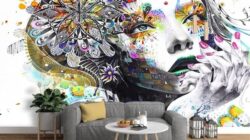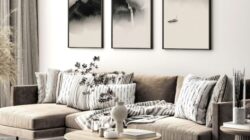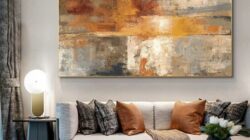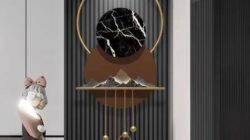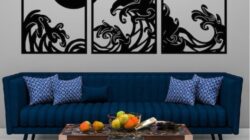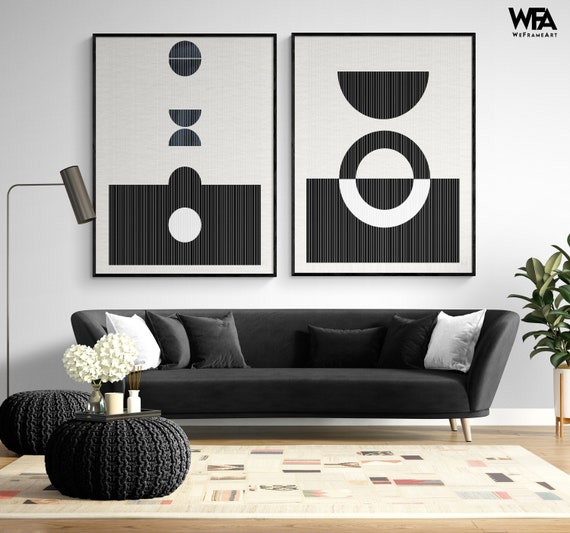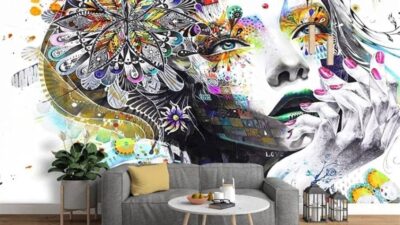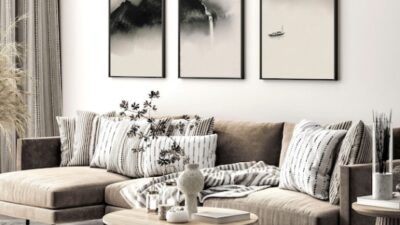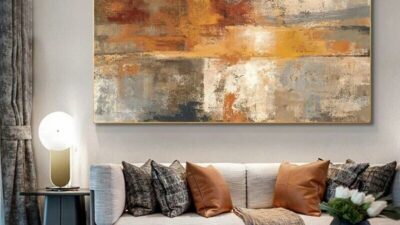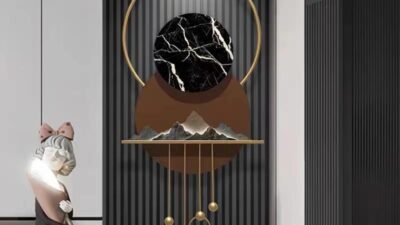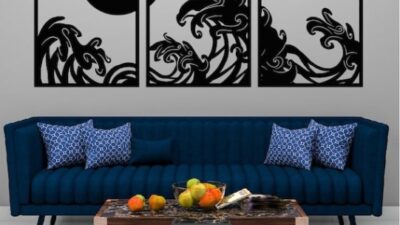Art Deco: A Luxurious Journey Through the Roaring Twenties
What is Art Deco?
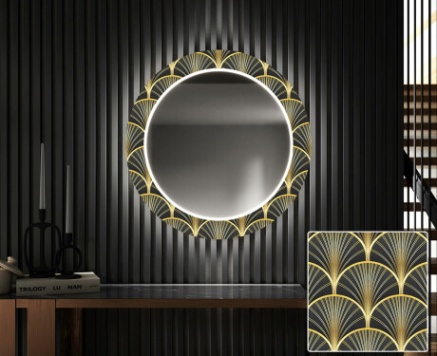
Image Source: artforma.de
Art Deco, a style that exudes luxury, glamour, and geometric precision, emerged in the 1920s and 30s. It was a period of rapid technological advancement and social change, and Art Deco perfectly captured the spirit of the times. This design movement celebrated modernity, speed, and the machine age, while also drawing inspiration from ancient civilizations, such as Egyptian and Aztec cultures.
Art Deco is characterized by its bold lines, geometric shapes, rich colors, and luxurious materials. It often features motifs like sunbursts, zigzags, chevrons, and stylized natural forms. The style was applied to a wide range of design disciplines, including architecture, Interior Design, furniture, jewelry, Fashion, and Graphic Design.
The History of Art Deco
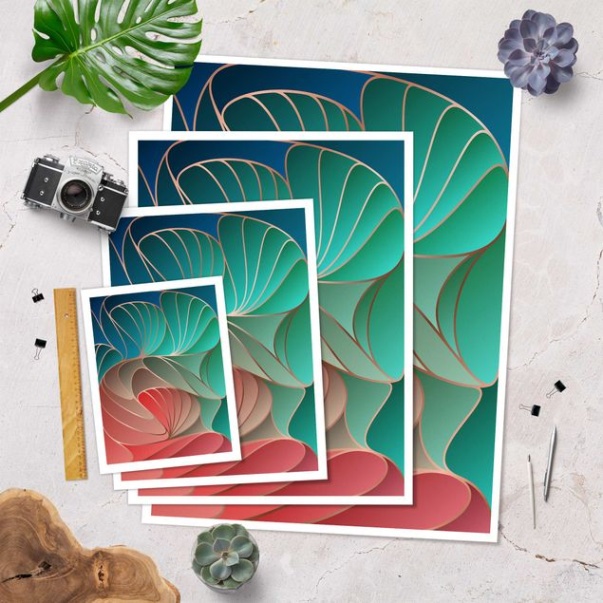
Image Source: wallart.de
The roots of Art Deco can be traced back to the late 19th century, with influences from the Art Nouveau movement and the Arts and Crafts movement. However, it was during the 1920s that Art Deco truly flourished. The Paris Exposition Internationale des Arts Décoratifs et Industriels Modernes of 1925 is often considered the pivotal moment in the development of the style. This exhibition showcased the latest trends in design and architecture, and Art Deco quickly became the dominant aesthetic.
In the United States, Art Deco gained popularity in the 1920s and 30s, particularly in New York City, where iconic Art Deco skyscrapers like the Chrysler Building and the Empire State Building were constructed. The style also influenced the design of luxury ocean liners, such as the SS Normandie and the RMS Queen Mary.
Key Characteristics of Art Deco
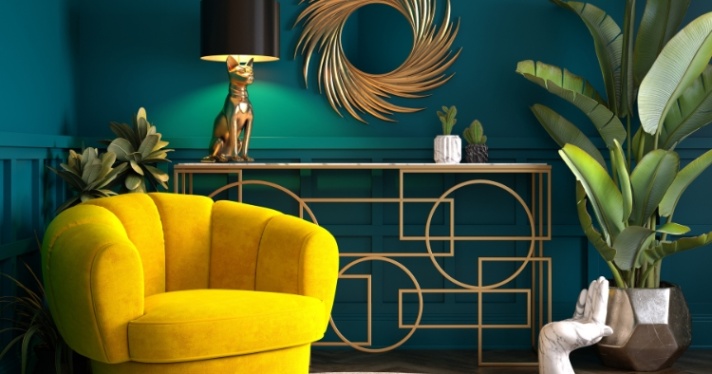
Image Source: kranz-buero.de
Art Deco is characterized by a number of distinctive features:
Geometric Shapes: Bold geometric shapes, such as circles, squares, triangles, and trapezoids, are a hallmark of Art Deco. These shapes are often combined to create dynamic and visually striking compositions.
Art Deco Architecture
Art Deco architecture is characterized by its bold and dramatic forms, often featuring soaring skyscrapers with stepped-back designs and ornate decorative details. Art Deco buildings are typically clad in sleek, modern materials, such as glass and steel, and often feature geometric motifs and stylized natural forms.
Some of the most famous examples of Art Deco architecture include:
Chrysler Building, New York City: This iconic skyscraper is a masterpiece of Art Deco design, featuring a distinctive stepped-back silhouette and ornate decorative details.
Art Deco Interior Design
Art Deco interior design is characterized by its luxurious and sophisticated aesthetic. Art Deco interiors often feature rich, saturated colors, bold geometric patterns, and a variety of luxurious materials, such as marble, chrome, glass, and exotic woods.
Key elements of Art Deco interior design include:
Geometric Patterns: Geometric patterns, such as chevrons, zigzags, and sunbursts, are often used in Art Deco interiors to create dynamic and visually striking effects.
Art Deco Furniture
Art Deco furniture is characterized by its sleek, streamlined forms, often featuring geometric shapes and exotic materials. Art Deco furniture designers were inspired by the machine age, and their designs often reflected the clean lines and functional aesthetic of modern technology.
Key characteristics of Art Deco furniture include:
Geometric Shapes: Geometric shapes, such as circles, squares, triangles, and trapezoids, are a common motif in Art Deco furniture design.
Art Deco Jewelry
Art Deco jewelry is characterized by its bold, geometric designs, often featuring colorful gemstones and luxurious materials. Art Deco jewelers were inspired by the Art Deco movement’s emphasis on modernity, speed, and luxury.
Key characteristics of Art Deco jewelry include:
Geometric Shapes: Geometric shapes, such as circles, squares, triangles, and trapezoids, are a common motif in Art Deco jewelry.
Art Deco Fashion
Art Deco fashion was characterized by its sleek, streamlined silhouettes, often featuring geometric patterns and bold colors. Art Deco fashion designers were influenced by the Art Deco movement’s emphasis on modernity, speed, and luxury.
Key characteristics of Art Deco fashion include:
Geometric Patterns: Geometric patterns, such as chevrons, zigzags, and sunbursts, were popular in Art Deco fashion.
The Lasting Impact of Art Deco
Art Deco had a profound impact on design and culture, and its influence can still be seen today. The style’s emphasis on luxury, glamour, and geometric precision continues to inspire designers and artists around the world.
Art Deco has also had a significant impact on popular culture. The style has been featured in numerous films, television shows, and video games. Art Deco has also inspired the design of modern products, such as cars, furniture, and electronics.
Conclusion
Art Deco is a timeless style that continues to captivate and inspire. Its bold, geometric forms, rich colors, and luxurious materials have left an enduring legacy. Whether you’re admiring the iconic skyscrapers of New York City or the elegant interiors of a luxury hotel, Art Deco’s influence can be seen everywhere.
FAQs
1. What is the difference between Art Deco and Art Nouveau?
Art Deco and Art Nouveau are two distinct design movements that emerged in the late 19th and early 20th centuries. Art Nouveau is characterized by its flowing, organic forms and its emphasis on natural motifs. Art Deco, on the other hand, is characterized by its bold, geometric forms and its emphasis on modernity and technology.
2. When did Art Deco reach its peak popularity?
Art Deco reached its peak popularity in the 1920s and 1930s. The Paris Exposition Internationale des Arts Décoratifs et Industriels Modernes of 1925 is often considered the pivotal moment in the development of the style.
3. What are some of the most famous examples of Art Deco architecture?
Some of the most famous examples of Art Deco architecture include the Chrysler Building, the Empire State Building, and the Radio City Music Hall in New York City.
4. How did Art Deco influence fashion?
Art Deco influenced fashion by introducing bold, geometric patterns, sleek, streamlined silhouettes, and luxurious fabrics. Art Deco fashion often featured rich, saturated colors and a focus on the female form.
5. What is the significance of the Chrysler Building in the history of Art Deco?
art decor




